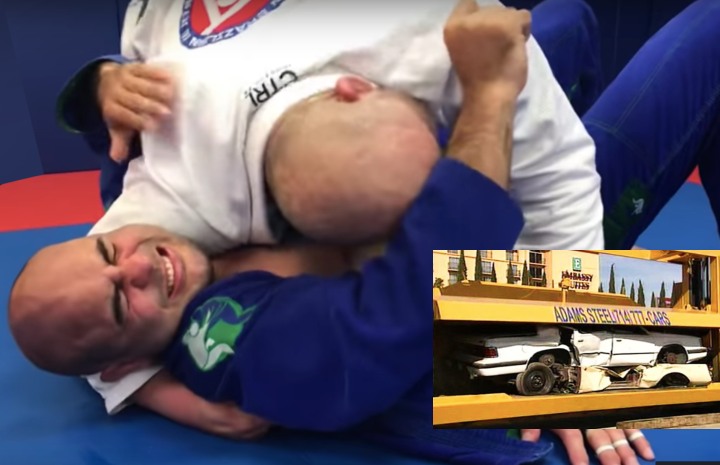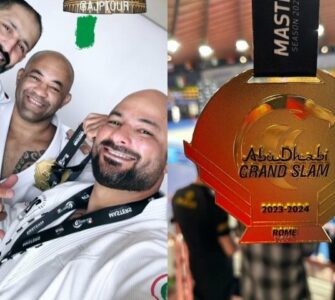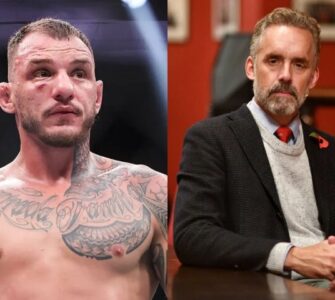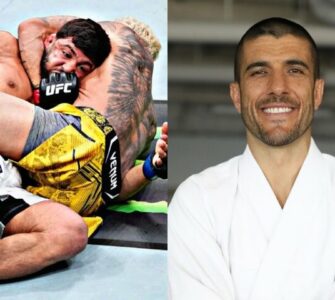Do you remember when you were a child and sunk your weight into the ground when upset or not wanting to get picked up? Think for a moment what is different when someone yells help in an alarming way. Understanding these differences will help to give meaning to the idea of what it means to root. In the side control position, how to make yourself feel heavier without changing your physical structure.
A key concept in rooting is the concept of center of mass and center of balance. The center of mass is situated on the plane where a belt would be tied below your navel; it is parallel to the ground. The center of balance is situated on the plane from our pelvic floor to the crown of our head; it runs perpendicular to the ground. A trick to finding a false root is to bring your center of mass closer to the ground; ie bending your body closer to the ground. However real rooting takes place with the mind’s ability to focus through the body and into the ground. Think now of a large tree with actual roots.
Often times in modern culture there is disconnection between what regions of the body control movement. A common pattern of movement when nervous or frightened the awareness is brought up to the head. While sudden shocks often bring the body towards the center of mass in a fetal position. In working with seniors in fall prevention, much of my method is dissolving fear of falling by learning how to move with more fluidity and confidence. This fear itself brings awareness of control upwards instead of down towards the legs and through the feet. Much research has found most falls with seniors involve the hands/shoulders going in one direction while the legs are going in a different direction. For example using a walker to navigate around a corner can really create a disconnection of movement centers. With understanding how to coordinate the ankles and knees with regard to the hips then shoulders one can build more versatile and robust confidence in movement so the mind can penetrate beyond the legs through the feet and into the ground.
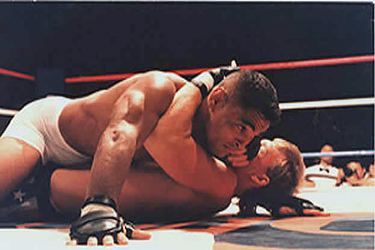
One more key element of rooting is the significance of fascia (connective tissue in our body that creates a matrix support structure in our body). This significance is rather indirect but once understood and embodied offers more root. A student of mine in a daoist yoga class once asked, “is fascia a new age concept?” I took a step outside of my box and said yes in terms of western anatomy. Until recently fascia was put aside to access more overt components of movement in musculature. Accessing the network of fascia offers the deepest insights into our kinetic intelligence. (Some cool facts, fascia doesn’t require oxygen, predates and is faster than our central nervous system.) Fascia when trained properly is a shock absorber and gives detailed and critical information (proprioception) to how we differentiate and take in changes in structural relations. A nice visualization is a trampoline, where our bones are like the metal structure, the springs on the outer edges like tendons/muscles and fascia like the webbing in the center. A trampoline is an object of potential, when we jump on it we bounce back. The sensitivity and pliability of this center material transmits to the other components what kind of force is being put on it. In our complex state of being, the mind has more freedom to detect what to filter and respond to than when we activate muscular force. Now with the idea of fascia we can get new insight into the process of root. Try balancing on leg by pressing the leg into the ground hard and straightening the leg. Now try finding pliability in the joints and softening the muscles. Which is more easy? The mind gets distracted in the muscle and cant extend smoothly through the ground.
The key with fascia is pliability; reducing the adhesions formed from trauma, scar tissue, repetitive movement patters and postural dysfunction. The practice of yin yoga targets breathing into and through these blockages using passive stretching (letting gravity take over) and longer hold times (3-5 minutes). The feeling upon coming out of a yin shape is levity and more mobility.
In most martial arts, the idea is to hide and maintain your center of gravity in relation to your center of mass while exploiting your opponents (essentially pulling the center of balance out of the center of mass). This take on leverage is what Rickson Gracie calls invisible strength. On an interesting note, healing takes place when we allow our center of balance to get pulled out of the center of mass (trusting or in many times the notion of auto suggestion) you allow yourself to go to a doctor to get healed. Unfortunately many people and societies also succumb to uprooting when we place trust in structures (governments) that don’t have the best intentions.
As a martial artist, I have found the training with a stability ball gives such a unique perspective on rooting regardless of style. GSP, Rickson Gracie, Ronda Rousey, Eddie Glover, Master Wong J are a few well-known martial artists that have taken advantage of the ball. A ball is the most ideal object in martial artist; it is both yin/yang. While celebrity martial artist, Bruce Lee had a great quote “be water my friend”, that is because our physical body tends towards fire or entropy just being in the living condition. The ball from the center to the periphery is extremely yang pushing in every direction. From the outside the ball is extremely yin, accepting change in every direction. When we learn how to focus our mind to stick our center of mass on this paradoxical object we develop a path towards unconscious competence, the ability to do without doing. In this elusive state that requires much effort to attain, our mind can penetrate through challenges and into the ground.
Written by Mike Ninomiya, instructor at Radiant Beginning Yoga
Ken Primola explains rooting your hips when doing Jiu-Jitsu:

